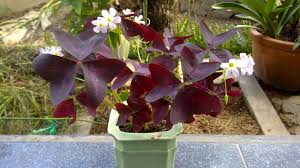Bánh Bao Chay: A Delicious Vietnamese Vegetarian Steamed Bun

Bánh Bao Chay, the vegetarian version of the traditional Vietnamese steamed bun, offers a delightful and flavorful alternative to its meat-filled counterpart. This dish is not only a staple for vegetarians and vegans but also a favorite among those who enjoy light, healthy, and satisfying meals. Bánh Bao Chay features a soft, slightly sweet bun filled with a savory mixture of vegetables, tofu, mushrooms, and sometimes vermicelli noodles or other plant-based ingredients, creating a perfect balance of flavors and textures.
In Vietnamese cuisine, Bánh Bao Chay is often enjoyed for breakfast, lunch, or as a snack. Its versatility and nutritional benefits have made it an essential part of vegetarian dining, particularly in Buddhist culture, where vegetarianism is an important aspect of daily life. The popularity of Bánh Bao Chay is also growing beyond the vegetarian community, as more people are embracing plant-based diets and seeking healthier, sustainable food options.
In this article, we will explore the history, ingredients, preparation methods, and variations of Bánh Bao Chay, as well as tips for making this dish at home. We will also highlight the cultural significance of Bánh Bao Chay in Vietnam and how it has evolved over time to meet the demands of modern dining.
The Origins and Cultural Significance of Bánh Bao Chay
Bánh Bao, both the meat-filled and vegetarian versions, has its roots in Chinese cuisine, particularly in the Cantonese and Hakka culinary traditions. These steamed buns, known as baozi in Chinese, were brought to Vietnam by Chinese immigrants, where they evolved to include unique local ingredients and flavors. While traditional Bánh Bao typically features pork, Bánh Bao Chay emerged as a vegetarian variation of the dish to cater to the growing demand for plant-based meals in Vietnamese culture.
The name “Bánh Bao Chay” translates to “vegetarian steamed bun” in Vietnamese, with chay referring to vegetarian or vegan food. The vegetarian version of Bánh Bao has become especially popular among Buddhists, who observe a vegetarian diet as part of their spiritual practice. Buddhist temples in Vietnam often serve Bánh Bao Chay during religious ceremonies or as part of the daily meals offered to monks and visitors.
Over time, Bánh Bao Chay has gained popularity outside of religious contexts and is now commonly found in street food stalls, restaurants, and homes across Vietnam. It is often consumed as a quick breakfast or a snack on the go. The dish’s simplicity, nutritious ingredients, and comforting flavors make it a beloved food item for people of all ages and dietary preferences.
Key Ingredients of Bánh Bao Chay
The success of Bánh Bao Chay lies in the combination of fresh vegetables, tofu, mushrooms, and other plant-based ingredients that form the savory filling. The dough itself should be light and fluffy, creating the perfect base for the hearty vegetable filling. Let’s take a closer look at the key ingredients that make up Bánh Bao Chay.
1. The Dough
The dough for Bánh Bao Chay is similar to that of traditional Bánh Bao but with slight variations to accommodate the vegetarian filling. It is made from all-purpose flour, yeast, sugar, and a small amount of vegetable oil. The dough should be soft, slightly sweet, and light, creating the perfect balance with the savory filling.
The dough is kneaded to a smooth, elastic texture and left to rise, allowing it to become fluffy when steamed. It is important to get the right consistency, as the bun should be soft but sturdy enough to hold the filling.
2. Tofu
Tofu plays a key role in providing protein and texture to the filling. Firm or extra-firm tofu is typically used in Bánh Bao Chay, as it holds its shape better when cooked and gives the filling a satisfying bite. The tofu is often sautéed or stir-fried with seasonings to add flavor and absorb the other ingredients in the mixture.
In some recipes, tofu may be crumbled or mashed to create a smoother texture, while in others, it remains in larger cubes for a more substantial bite.
3. Mushrooms
Mushrooms, especially shiitake mushrooms, are commonly used in Bánh Bao Chay for their umami flavor and chewy texture. Shiitake mushrooms, known for their rich taste, are finely chopped and added to the filling, often alongside other vegetables. The mushrooms help create a savory base that complements the tofu and other ingredients.
In addition to shiitake, other types of mushrooms, such as oyster mushrooms or enoki mushrooms, can also be used, depending on availability and personal preference. These mushrooms add depth to the flavor profile and make the filling more interesting.
4. Vegetables
A variety of vegetables are included in the filling of Bánh Bao Chay, adding both flavor and nutrition. Common vegetables include carrots, cabbage, bamboo shoots, and water chestnuts. The vegetables are finely chopped or shredded, and they are stir-fried until tender before being mixed with the tofu and mushrooms. These vegetables add crunch, sweetness, and color to the filling, creating a balanced and flavorful mixture.
5. Vermicelli Noodles (Optional)
Vermicelli noodles, also known as bánh hỏi or bánh phở in Vietnamese, are sometimes added to Bánh Bao Chay for extra texture and substance. The noodles are typically stir-fried with the tofu and vegetables, helping to bind the filling together and making it more filling. While this ingredient is optional, it is a popular addition in many versions of Bánh Bao Chay.
6. Seasonings
Seasonings are essential to give the filling its signature flavor. A mixture of soy sauce, sesame oil, oyster sauce (vegetarian versions), sugar, garlic, and white pepper is commonly used to season the tofu and vegetables. These seasonings create a savory-sweet balance that elevates the natural flavors of the vegetables and tofu.
To add additional depth and fragrance, fresh garlic and shallots are often sautéed with the other ingredients. Some recipes may also include five-spice powder or other herbs to enhance the aroma and taste.
How to Make Bánh Bao Chay at Home
Making Bánh Bao Chay at home is a rewarding and satisfying experience. While the process involves several steps, it is relatively simple and can be done with basic kitchen tools. Below is a step-by-step guide to making this delicious dish at home.
Ingredients for the Filling:
- 300g firm tofu, crumbled or cubed
- 100g shiitake mushrooms, finely chopped
- 1 carrot, shredded
- 1/2 small cabbage, finely shredded
- 100g bamboo shoots or water chestnuts, chopped (optional)
- 100g vermicelli noodles (optional)
- 2 tablespoons soy sauce
- 1 tablespoon sesame oil
- 1 tablespoon vegetarian oyster sauce (optional)
- 1 teaspoon sugar
- 1 teaspoon white pepper
- 2 cloves garlic, minced
- 1 tablespoon vegetable oil
Ingredients for the Dough:
- 500g all-purpose flour
- 2 teaspoons active dry yeast
- 2 teaspoons sugar
- 1/2 teaspoon baking powder
- 250ml warm water
- 2 tablespoons vegetable oil
- A pinch of salt
Instructions:
1. Prepare the Dough:
- In a large mixing bowl, combine the flour, yeast, sugar, and salt. Mix well.
- Gradually add the warm water and vegetable oil, stirring continuously until a dough forms.
- Knead the dough on a lightly floured surface for about 10 minutes until it becomes smooth and elastic.
- Cover the dough with a damp cloth and let it rise for about 1-1.5 hours, or until it doubles in size.
2. Prepare the Filling:
- In a large pan, heat the vegetable oil over medium heat. Add the garlic and sauté until fragrant.
- Add the tofu, mushrooms, carrots, cabbage, and bamboo shoots (if using). Stir-fry for 5-7 minutes until the vegetables are tender.
- Season with soy sauce, sesame oil, oyster sauce, sugar, and white pepper. Stir well to combine.
- If using vermicelli noodles, add them to the pan and stir to incorporate. Cook for an additional 2-3 minutes.
- Remove the filling from heat and set it aside to cool.
3. Shape the Bánh Bao Chay:
- After the dough has risen, punch it down and divide it into small portions (about 10-12 pieces).
- Roll each piece into a ball and flatten it into a small circle using a rolling pin.
- Place a spoonful of the filling in the center of each dough circle, then pinch the edges together to seal the bun.
- Repeat the process until all the buns are shaped.
4. Steam the Bánh Bao:
- Place the buns in a steamer basket lined with parchment paper or cheesecloth.
- Steam the buns over medium heat for 15-20 minutes, or until the buns are fluffy and cooked through.
- Remove the buns from the steamer and let them cool slightly before serving.
Variations of Bánh Bao Chay
While the classic Bánh Bao Chay is made with tofu, vegetables, and mushrooms, there are several variations of the dish that add unique ingredients or flavors:
- Tofu and Tempeh Bánh Bao: Replace some or all of the tofu with tempeh for a nuttier, firmer texture.
- Spicy Bánh Bao Chay: Add chili paste or fresh chilies to the filling to give it a spicy kick.
- Bánh Bao with Bean Sprouts: Add fresh bean sprouts to the filling for extra crunch and freshness.
Bánh Bao with Soy Meat: For a more protein-packed filling, soy meat (textured vegetable protein) can be used in place of tofu.
Conclusion
Bánh Bao Chay is a delightful and satisfying dish that showcases the best of vegetarian Vietnamese cuisine. With its soft, fluffy bun and savory vegetable filling, it offers a comforting meal for all ages and dietary preferences. Whether you enjoy it as a snack, breakfast, or light lunch, this dish is sure to please with its healthy ingredients, rich flavors, and cultural significance. Making Bánh Bao Chay at home allows you to explore the flavors of Vietnamese cuisine and enjoy a delicious, wholesome meal.

